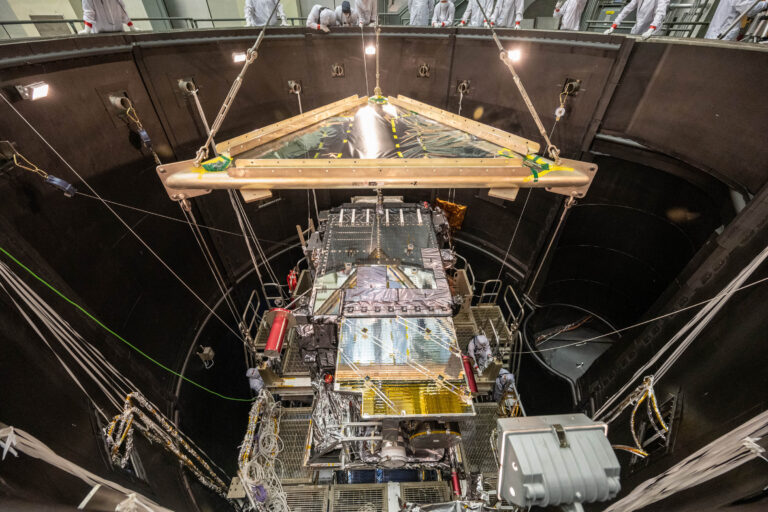NOAA’s GOES-T satellite, the third in a series of geostationary weather satellites, has completed rigorous testing to ensure it can withstand the harsh conditions of launch and orbiting in space 22,236 miles above Earth.
GOES-T is set to be launched in December 2021 from Cape Canaveral Air Force Station in Florida, USA. The satellite will be renamed GOES-18 once it reaches geostationary orbit.
Lockheed Martin and United Launch Alliance conducted the testing at the Lockheed Martin Littleton, Colorado, facility where the spacecraft was built. Testing procedures have included thermal vacuum testing, vibration testing, acoustic testing, shock testing, and a mission rehearsal.
During thermal vacuum testing, GOES-T was placed in a large 29ft x 65ft chamber and subjected to temperatures ranging from 188°F (87°C) to -67°F (-55°C) to simulate the extreme temperatures of launch and the space environment.
Vibration testing, meanwhile, mimicked the stresses GOES-T will experience during launch. GOES-T also endured extremely high sound pressure of 138.4 decibels from high-intensity horns during acoustic testing.
This video highlights thermal vacuum, acoustics, and vibration testing (video courtesy of Lockheed Martin/NOAA):
Most recently, the team conducted testing to verify the new Goddard Magnetometer (GMAG) instrument that will fly on GOES-T. The GOES-T and GOES-U satellites will carry an upgraded magnetometer instrument from the one aboard GOES-16 and GOES-17. The magnetometer measures magnetic field variations that are associated with space weather.
NOAA’s GOES-R program is a four-satellite mission that includes GOES-R (GOES-16, launched in 2016); GOES-S (GOES-17, launched in 2018); GOES-T; and GOES-U, planned for launch in 2024.
NOAA is also beginning work on the next-generation geostationary mission called Geostationary and Extended Orbits (GEO-XO). GEO-XO will continue the observations provided by GOES-R and also bring new capabilities to address major environmental challenges of the future in support of US weather, ocean and climate operations. The GOES-R and GEO-XO Programs are collaborative efforts between NOAA and NASA.



